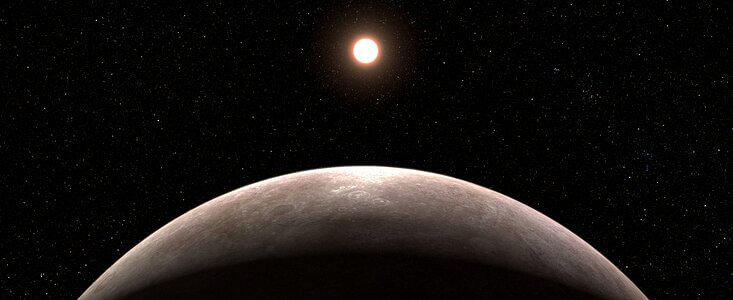However, the conditions there are more reminiscent of Venus than Earth. It orbits a red dwarf in an orbit that lasts only two days * Webb was able to confirm the existence of the planet after only two orbits

Researchers have confirmed for the first time the presence of a planet orbiting another star, using the James Webb Space Telescope. The diameter of the planet, named LHS 475 b, is 99% of the diameter of Earth. However, it orbits a red dwarf star every two days - an environment completely different from our solar system.
The research team is led by Kevin Stevenson and Jacob Lustig-Yager, both of the Applied Physics Laboratory at Johns Hopkins University in Laurel, Maryland. The team chose to observe this target with Webb after carefully examining data from NASA's Extrasolar Planet Survey satellite TESS that hinted at the existence of the planet. The Webb Near Infrared Spectrograph (NIRSpec) located the planet easily and clearly after just two flybys. "There is no doubt that Earth's twin is there. Webb's pristine data confirms this," Lustig-Yager said. "The fact that it is a small and rocky planet - a type of planet that has been difficult to locate until today proves the impressive ability of the Webb telescope," added Stevenson.
"These first observational results from a rocky Earth-sized planet open the door to many future possibilities for studying the atmospheres of rocky planets with WEB," says Mark Clampin, director of the Astrophysics Division at NASA Headquarters in Washington. "The Web is bringing us ever closer to a new understanding of Earth-like worlds outside the solar system, and the mission is just beginning."
Of all the telescopes in operation, only Webb is capable of characterizing the atmospheres of Earth-sized planets. The team tried to estimate what was in the planet's atmosphere by analyzing its transmission spectrum. Although the data shows it is an Earth-sized terrestrial planet, they still don't know if it has an atmosphere. "Webb's data is impressive," said Erin May, also of the Applied Physics Laboratory at Johns Hopkins University. "The telescope is so sensitive that it can easily detect a variety of molecules, but we still cannot draw any definite conclusions about the planet's atmosphere."
Although the team cannot infer what exists, they can certainly tell what does not exist. According to Lustig-Yager. "It cannot have a thick atmosphere dominated by methane, similar to that of Saturn's moon Titan."
The team also notes that while the planet may not have an atmosphere, there are some atmospheric compositions that have not been ruled out, such as a pure carbon dioxide atmosphere. "Contrary to intuition, an atmosphere of 100% carbon dioxide is much more compact, to the point where it becomes very challenging to detect," Lustig-Yager said. Even more precise measurements are needed for the team to distinguish between a pure carbon dioxide atmosphere and no atmosphere at all. The researchers should receive another spectrum with additional observations this summer.
Webb also discovered that the planet is several hundreds of degrees warmer than Earth, so if clouds are detected it may lead researchers to conclude that the planet is more like Venus, which has a carbon dioxide atmosphere and is permanently shrouded in thick cloud. "We are at the cutting edge of exploring small, rocky planets," said Lustig-Yager. "We have barely begun to scratch the surface of their atmospheres."
The researchers also confirmed that the planet completes an orbit in just two days, information revealed almost immediately by Webb's precise light curve. Although LHS 475 b is closer to its star than any planet in the Solar System, the red dwarf it orbits is much colder—about half the thickness of the Sun—so researchers predict the planet may still have an atmosphere.
Its is less than half the temperature of the Sun, so researchers predict it could still support an atmosphere.
The researchers' findings opened up the possibility of locating Earth-sized planets orbiting smaller red dwarfs. "Confirmation of this rocky planet highlights the precision of the telescope's instruments," Stevenson said. "And this is only the first of many discoveries that he is expected to bring." Lustig-Jäger agreed: "With this telescope, rocky planets are the new frontier."
LHS 475 b is relatively close to us, at a distance of only 41 light years, in the constellation Octante, where the celestial south pole point is also located.
More of the topic in Hayadan:

2 תגובות
So what is the matter if the star is like Venus - there are no living conditions on it?
James Webb was overall a politician who did good things. But if Da Vinci were alive today - would he have invested in such a telescope or in matters that Elon Musk invests in?
https://www.geniuses.club/blog/elon-musk-v-leonardo-da-vinci